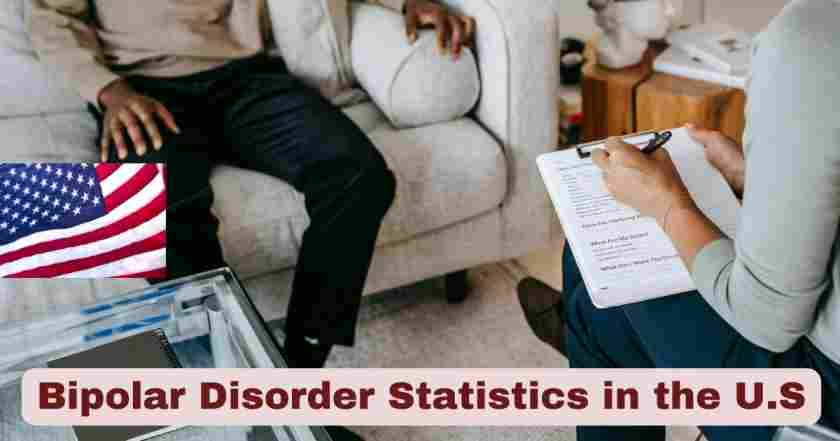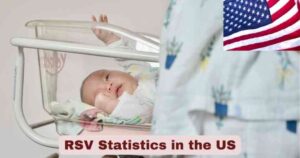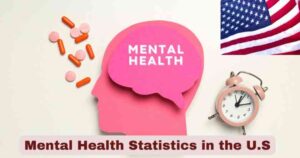Bipolar Disorder in the U.S. in 2025
Bipolar disorder continues to be one of the most significant mental health challenges facing Americans today. This complex neurological condition affects millions of individuals across the United States, fundamentally altering their emotional regulation, energy levels, and daily functioning. The disorder manifests through dramatic shifts between manic or hypomanic episodes and depressive states, creating a rollercoaster of emotional experiences that can devastate personal relationships, professional careers, and overall quality of life.
The current landscape of bipolar disorder in America reveals both concerning trends and promising developments. While the prevalence remains substantial, affecting approximately 2.8% of the adult population, increased awareness and improved diagnostic techniques have led to better understanding and treatment options. However, the condition continues to pose significant challenges, with many individuals experiencing delayed diagnosis, inadequate treatment, and substantial economic burdens. The ripple effects extend far beyond those directly affected, impacting families, communities, and the broader healthcare system with costs exceeding $219 billion annually.
Key Facts About Bipolar Disorder in the U.S. in 2025
| Statistic Category | Key Facts |
|---|---|
| Total Population Affected | 2.8% of U.S. adults (approximately 7.3 million people) |
| Annual Economic Impact | $219.1 billion total cost burden |
| Suicide Risk | 10-30 times higher suicide rate compared to general population |
| Average Age of Onset | 25 years (median age for first manic episode) |
| Life Expectancy Impact | 9 years reduction in average lifespan |
| Adolescent Prevalence | 2.9% of teens aged 13-18 affected |
| Gender Distribution | 2.9% males, 2.8% females (nearly equal rates) |
| Treatment Resistance | 20-30% of Bipolar I patients continue experiencing symptoms despite treatment |
| Severe Impairment Rate | 2.6% of adolescents experience severe functional impairment |
| Healthcare Cost Distribution | 25% direct medical costs, 75% indirect costs |
The data reveals that bipolar disorder maintains a consistent presence across American demographics, with the 2.8% prevalence rate representing a stable figure that has remained relatively unchanged over recent years. This consistency suggests that while awareness and diagnostic capabilities have improved, the underlying biological and environmental factors contributing to the disorder remain constant. The nearly equal distribution between males and females, at 2.9% and 2.8% respectively, contradicts earlier assumptions about gender-based differences in bipolar disorder prevalence.
The economic impact of $219.1 billion annually represents a staggering burden on the American healthcare system and economy. This figure encompasses not only direct medical expenses but also the substantial indirect costs associated with lost productivity, unemployment, and caregiving responsibilities. The fact that 75% of these costs are indirect highlights the far-reaching consequences of bipolar disorder beyond traditional healthcare expenditures. The 9-year reduction in life expectancy underscores the severe physical and mental health complications associated with the condition, emphasizing the critical need for comprehensive treatment approaches and early intervention strategies.
Prevalence and Demographics of Bipolar Disorder in the U.S. in 2025
| Demographic Category | Prevalence Rate | Population Impact |
|---|---|---|
| Overall Adult Population | 2.8% | 7.3 million adults |
| Adolescents (13-18 years) | 2.9% | Approximately 1.2 million teens |
| Male Adults | 2.9% | 3.7 million men |
| Female Adults | 2.8% | 3.6 million women |
| Severe Impairment Cases | 2.6% of adolescents | Over 1 million severely impacted teens |
| Working-Age Population | Primary demographic | Most cases occur in 18-44 age range |
The demographic distribution of bipolar disorder in the United States reveals important patterns that inform treatment and prevention strategies. The 2.8% overall prevalence rate translates to approximately 7.3 million American adults living with the condition, making it one of the most common serious mental health disorders in the country. The adolescent prevalence rate of 2.9% indicates that the condition often emerges during the teenage years, with many cases developing symptoms before reaching adulthood.
The nearly identical prevalence rates between males and females challenges historical assumptions about gender-based differences in bipolar disorder. This 2.9% male and 2.8% female distribution suggests that biological and environmental risk factors affect both genders equally, though the presentation and course of the illness may still vary between sexes. The concentration of cases in the working-age population, particularly those aged 18-44, highlights the significant impact on productivity and economic contributions, as these individuals are typically at the peak of their professional and family-building years.
Treatment and Healthcare Access for Bipolar Disorder in the U.S. in 2025
| Treatment Metric | Statistics | Clinical Significance |
|---|---|---|
| Treatment-Resistant Cases | 20-30% of Bipolar I patients | Chronic symptoms despite medication compliance |
| Median Age at First Treatment | 25 years | Often coincides with first manic episode |
| Direct Medical Costs | 25% of total economic burden | Approximately $55 billion annually |
| Hospitalization Impact | Significant contributor | Major component of direct costs |
| Misdiagnosis Rate | High frequency | Often confused with unipolar depression |
| Treatment Compliance | Variable | 15% of Bipolar II patients remain treatment-resistant |
The treatment landscape for bipolar disorder in the United States presents both achievements and ongoing challenges. Despite significant advances in pharmacological and therapeutic interventions, 20-30% of individuals with Bipolar I disorder continue to experience mood instability, interpersonal difficulties, and occupational impairment even when following prescribed treatment regimens. This treatment-resistant population represents a particularly vulnerable group requiring specialized care approaches and innovative therapeutic strategies.
The median age of 25 years for first manic episodes often coincides with the initial entry into mental health treatment, suggesting that many individuals may experience years of undiagnosed or misdiagnosed symptoms before receiving appropriate care. The high frequency of misdiagnosis, particularly the confusion with unipolar depression, contributes to delayed appropriate treatment and potentially worsened outcomes. The concentration of 25% of total costs in direct medical expenses, approximately $55 billion annually, reflects the intensive nature of bipolar disorder treatment, including frequent hospitalizations, ongoing medication management, and specialized psychiatric care.
Economic Impact and Costs of Bipolar Disorder in the U.S. in 2025
| Cost Category | Annual Amount | Percentage of Total |
|---|---|---|
| Total Economic Burden | $219.1 billion | 100% |
| Direct Medical Costs | $55 billion | 25% |
| Indirect Costs | $164 billion | 75% |
| Lost Productivity | $145 billion | 66% |
| Unemployment Costs | $19 billion | 9% |
| Caregiving Burden | Significant portion | Included in indirect costs |
| Serious Mental Illness Impact | $193.2 billion | Lost earnings across all conditions |
The economic impact of bipolar disorder represents one of the most substantial healthcare burdens in the United States, with the $219.1 billion annual cost placing it among the most expensive mental health conditions. The distribution of these costs reveals the far-reaching consequences of the disorder beyond traditional healthcare expenses. While direct medical costs account for $55 billion or 25% of the total burden, the overwhelming majority of expenses stem from indirect costs totaling $164 billion or 75% of the overall economic impact.
The $145 billion in lost productivity represents the largest single component of the economic burden, reflecting the significant impact on workforce participation and job performance among individuals with bipolar disorder. Unemployment costs of $19 billion further underscore the employment challenges faced by those living with the condition. The substantial caregiving burden, while difficult to quantify precisely, represents additional hidden costs borne by families and communities. These figures demonstrate that bipolar disorder’s economic impact extends far beyond the healthcare system, affecting the broader economy through reduced workforce productivity, increased disability claims, and extensive family caregiving responsibilities.
Suicide Risk and Mortality Rates for Bipolar Disorder in the U.S. in 2025
| Mortality Factor | Risk Level | Comparative Impact |
|---|---|---|
| Suicide Risk | 10-30 times higher | Compared to general population |
| Life Expectancy Reduction | 9 years average | Significant mortality impact |
| Cardiovascular Disease Risk | Elevated | Contributing factor to reduced lifespan |
| Overall Mortality Rate | Significantly higher | Multiple contributing factors |
| Severe Impairment Rate | 2.6% | Among adolescents with bipolar disorder |
| Crisis Intervention Needs | High | Requiring immediate psychiatric care |
The mortality statistics associated with bipolar disorder paint a sobering picture of the condition’s severity and life-threatening potential. The 10-30 times higher suicide risk compared to the general population represents one of the most alarming aspects of the disorder, highlighting the critical importance of comprehensive suicide prevention strategies and crisis intervention protocols. This elevated risk stems from the intense emotional dysregulation, impulsivity during manic episodes, and profound despair experienced during depressive phases.
The 9-year reduction in average life expectancy reflects not only the suicide risk but also the broader health complications associated with bipolar disorder. Cardiovascular disease, metabolic disorders, and other physical health conditions occur at higher rates among individuals with bipolar disorder, contributing to premature mortality. The 2.6% severe impairment rate among adolescents indicates that many young people with bipolar disorder experience such significant functional limitations that they require intensive support services and specialized care approaches. These statistics underscore the urgent need for early identification, comprehensive treatment, and ongoing monitoring to prevent tragic outcomes and improve long-term prognosis for individuals living with bipolar disorder.
Regional Variations and Healthcare Access in the U.S. in 2025
| Regional Factor | Impact Level | Access Considerations |
|---|---|---|
| State-by-State Variation | Significant differences | Emergency room admission rates vary |
| Rural vs Urban Access | Disparate availability | Limited specialist access in rural areas |
| Insurance Coverage | Variable | Depends on state Medicaid expansion |
| Mental Health Professional Shortage | Critical issue | Particularly acute in underserved areas |
| Emergency Department Utilization | High | Frequent crisis-related visits |
| Specialized Treatment Centers | Concentrated in urban areas | Limited availability in rural regions |
Regional disparities in bipolar disorder care access and outcomes represent a significant challenge across the United States. State-by-state variations in emergency room admission rates for bipolar disorder episodes reflect underlying differences in community mental health resources, insurance coverage, and healthcare infrastructure. These variations often correlate with broader socioeconomic factors, including poverty rates, educational attainment, and access to comprehensive healthcare services.
The rural-urban divide in mental health care access particularly impacts individuals with bipolar disorder, who often require specialized psychiatric care and ongoing monitoring. Many rural areas lack adequate numbers of psychiatrists, psychologists, and specialized mental health facilities, forcing patients to travel long distances for care or rely on emergency departments during crisis situations. The concentration of specialized treatment centers in urban areas, combined with insurance coverage variations depending on state Medicaid expansion policies, creates additional barriers to consistent, quality care for many Americans with bipolar disorder.
Future Outlook and Emerging Trends for Bipolar Disorder in the U.S. in 2025
| Trend Category | Projected Development | Expected Impact |
|---|---|---|
| Treatment Market Growth | $7 billion by 2033 | Expanding therapeutic options |
| Diagnostic Improvements | Enhanced screening tools | Earlier identification and intervention |
| Telemedicine Integration | Increased accessibility | Remote monitoring and support |
| Personalized Medicine | Genetic testing applications | Tailored treatment approaches |
| Digital Health Tools | Mood tracking applications | Improved self-management |
| Research Investment | Continued growth | Novel therapeutic targets |
The future landscape of bipolar disorder care in the United States shows promising developments that could significantly improve outcomes for the millions of Americans affected by this condition. The projected growth of the treatment market to $7 billion by 2033 reflects increased investment in research and development of new therapeutic approaches, including novel medications, psychotherapeutic interventions, and digital health technologies. This market expansion suggests growing recognition of the substantial unmet needs in bipolar disorder treatment and the potential for innovative solutions.
Emerging trends in personalized medicine, including genetic testing to predict medication responses and treatment outcomes, offer hope for more targeted and effective interventions. The integration of telemedicine and digital health tools provides opportunities to expand access to specialized care, particularly for individuals in underserved rural areas. These technological advances, combined with improved diagnostic screening tools and earlier intervention strategies, could potentially reduce the current 9-year average delay between symptom onset and appropriate treatment, ultimately improving long-term outcomes and reducing the substantial economic burden of bipolar disorder on American society.
Disclaimer: The data research report we present here is based on information found from various sources. We are not liable for any financial loss, errors, or damages of any kind that may result from the use of the information herein. We acknowledge that though we try to report accurately, we cannot verify the absolute facts of everything that has been represented.







